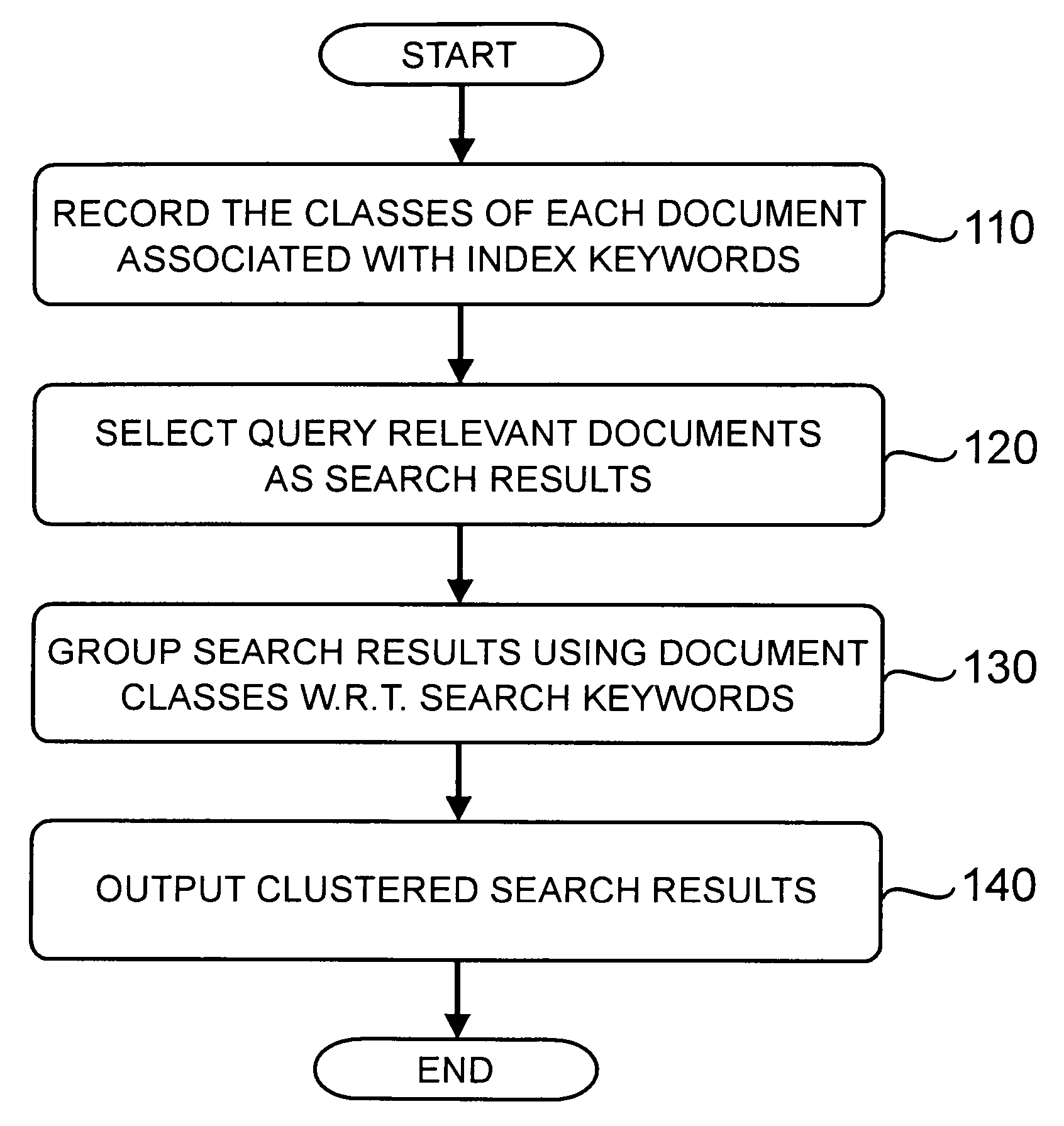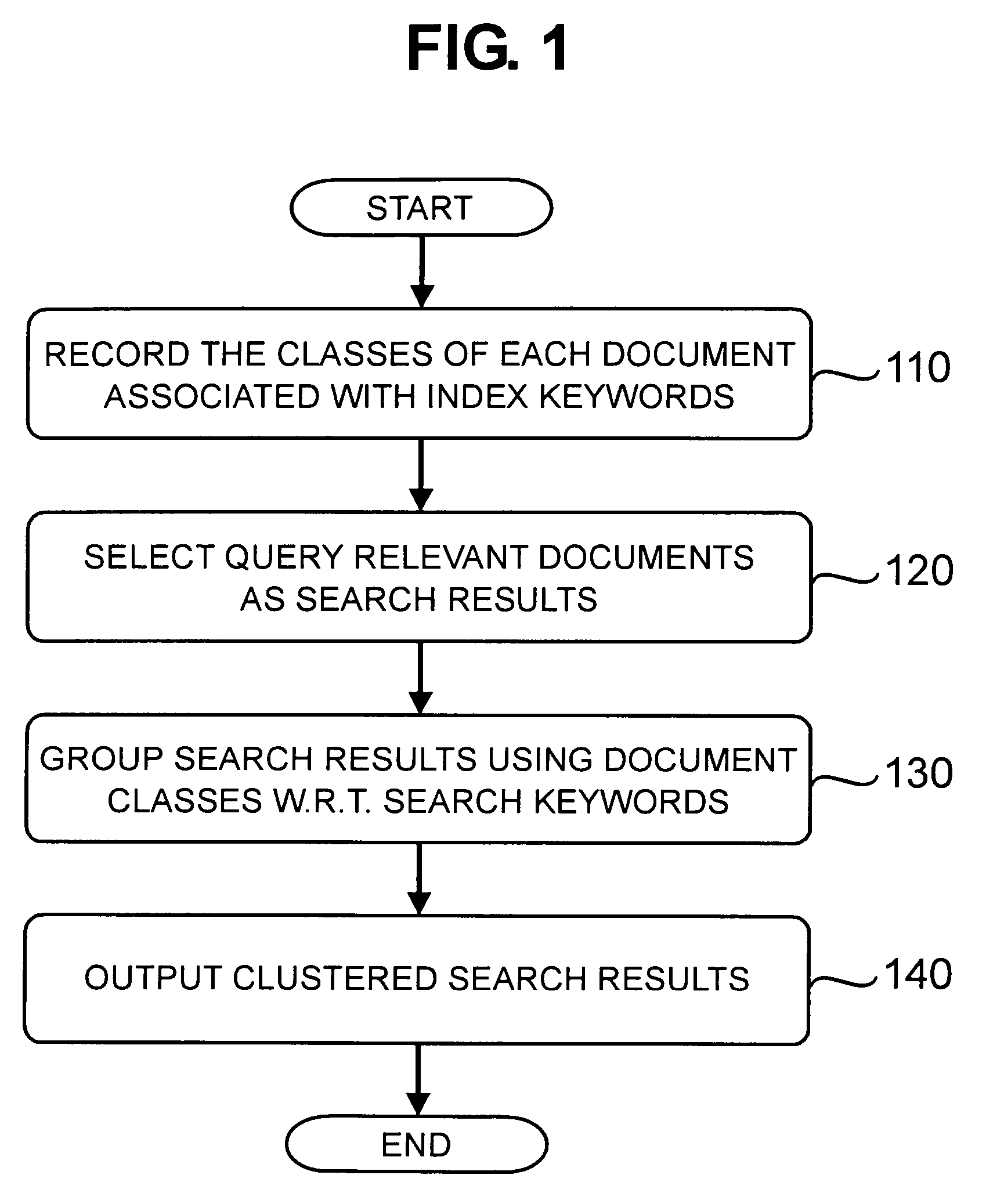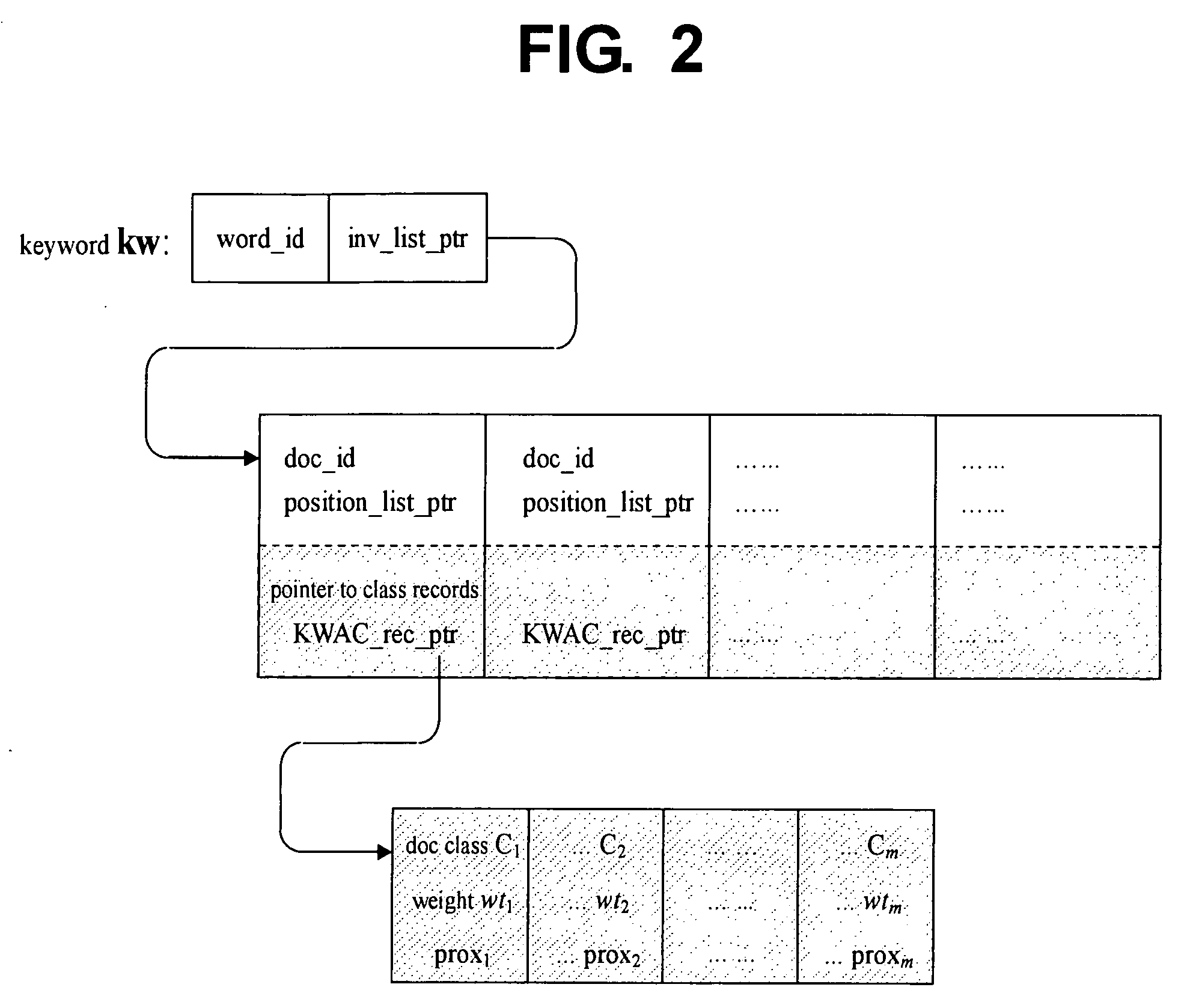Method for search result clustering
a search result and clustering technology, applied in the field of document clustering, can solve the problems of high cost, low precision, and difficulty for users to find information from a list of hundreds or thousands of candidate documents, and achieve the effects of low accuracy, high cost, and high difficulty in predetermining the categories of each documen
- Summary
- Abstract
- Description
- Claims
- Application Information
AI Technical Summary
Benefits of technology
Problems solved by technology
Method used
Image
Examples
Embodiment Construction
[0020] Methods and systems consistent with the principles of the invention may be implemented within conventional document retrieval system architectures, such as an Internet search engine. As would be known by anyone of ordinary skill in the art, a document retrieval system based on computer or computer network includes the following major components, namely a document collection, an indexing component for building an index of the document collection, and a retrieval (or search) component that in response to a search query, identifies via the index a subset of documents as the search results that are relevant (by some ranking criteria) to the query. A document collection typically consists of a certain number of electronic documents of various formats, such as text files or HTML web pages, etc. A document collection is updated whenever documents are added to or removed from it. Large-scale document retrieval systems generally use inverted indexes, i.e., indexes that record for each...
PUM
 Login to View More
Login to View More Abstract
Description
Claims
Application Information
 Login to View More
Login to View More - R&D
- Intellectual Property
- Life Sciences
- Materials
- Tech Scout
- Unparalleled Data Quality
- Higher Quality Content
- 60% Fewer Hallucinations
Browse by: Latest US Patents, China's latest patents, Technical Efficacy Thesaurus, Application Domain, Technology Topic, Popular Technical Reports.
© 2025 PatSnap. All rights reserved.Legal|Privacy policy|Modern Slavery Act Transparency Statement|Sitemap|About US| Contact US: help@patsnap.com



